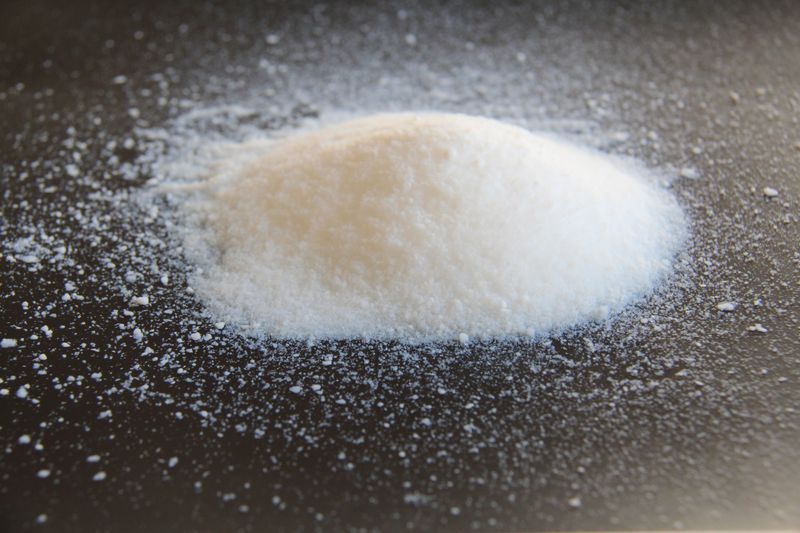What is Fumed Silica?
Fumed silica, also known as pyrogenic silica, is an ultra-fine, high-purity silica product manufactured through flame hydrolysis or vapor phase hydrolysis. This process involves burning silicon tetrachloride in a hydrogen-oxygen flame resulting in particles that have characteristic properties such as high porosity and surface area. The particles form loosely bonded, three-dimensional branched chains that result in a fluffy, almost powder-like consistency. Fumed silica has nano-sized primary particles (5-100 nm) that agglomerate into larger aggregates or agglomerates (0.1-100 μm).
Properties of Fumed Silica
The unique properties of Fumed Silica arise from its production process and nano-sized primary particles. Some key properties include:
– High Purity: Fumed silica contains over 99.8% silicon dioxide with very low levels of contaminants. This enhances performance in applications requiring high purity.
– Large Surface Area: Fumed silica has extremely large surface areas, typically 50-400 m2/g, compared to precipitated silicas (10-100 m2/g). This provides more sites for chemical interaction.
– Porosity: The nanoparticles form loosely bonded, highly porous, three-dimensional network structures with very small pores between the particles.
– Hydrophobicity: Freshly produced fumed silica has a hydrophobic surface due to the absence of surface hydroxyl groups. However, aging causes progressive hydroxylation rendering it more hydrophilic over time.
– Absorptive Capacity: High surface area and porous structure gives fumed silica excellent absorptive properties for liquids and gases.
– Viscosity Increase: Fumed silica is an effective thixotropic agent, increasing viscosity and providing suspension without significantly affecting other properties.
Applications of Fumed Silica
1. Reinforcement in Rubber
Fumed silica is heavily used as a reinforcing filler in rubber industries. It replaces carbon black as a reinforcing agent in applications requiring transparency. Fumed silica improves mechanical, thermal and dynamic properties of rubber articles like tires, sealants, hoses etc.
2. Thickening and Thixotropy
High surface area fumed silica is a key ingredient in providing thickening and thixotropic properties across industries like cosmetics, coatings, food, health and personal care. It suspends other components and prevents separation and sedimentation.
3. Desiccation
The hygroscopic nature and absorptive capacity of fumed silica makes it highly effective at moisture absorption and prevention of caking. It is used as a desiccant or drying agent in pharmaceuticals, food, chemicals and other hygroscopic materials.
4. Thermal Insulation
The porous structure of fumed silica results in low thermal conductivity, reducing heat transfer. Combined with other fillers, it enhances thermal insulation in applications like insulation mats, gaskets, sealants, coatings, among others.
5. Reinforcement in Silicone Rubber
Similar to general rubber, fumed silica improves mechanical properties of silicone rubbers. It enhances tensile strength, tear resistance and compression set in profiles, seals and medical tubing produced using silicone rubber formulations.
6. Additives in Coatings and Paints
Fumed silica improves hiding power, durability and gloss retention in coatings and paints. It controls rheology, inhibits sedimentation and provides reinforcement when added to latex, solvent-borne and powder coatings.
7. Carrier in Personal Care Products
High purity fumed silica acts as an effective carrier or delivery system in cosmetics and personal care products. It absorbs oils and active ingredients, retaining them on skin/hair surface for improved efficacy.
Concerns and Regulations around Fumed Silica
Like other fine particles, prolonged exposure to high concentrations of fumed silica dust may pose health risks. Though not classified as hazardous, NIOSH has recommended an exposure limit of 6 mg/m3 over an 8-hour workday.
The International Agency for Research on Cancer has not assigned fumed silica to any carcinogenicity group. However, the European Union requires manufacturers to consider fumed silica as a potential cause of cancer based on animal testing data.
OSHA requires manufacturers to implement engineering controls, ventilation systems, dust collection and personal protective equipment to maintain exposures below regulatory limits for fumed silica. Products containing fumed silica also need to meet various specifications for permitted levels of impurities.
Fumed silica is a unique nano-scale amorphous silica product synthesized through flame hydrolysis. Its nanoscale primary particles form highly porous, three-dimensional branched agglomerates imparting multifaceted properties. Owing to nanoscale dimensions, high purity, large surface area and porosity, fumed silica finds extensive applications in rubber, coatings, personal care, desiccants, thermal insulation, food and various industrial sectors. While handling safety is important, fumed silica continues growing in relevance and volume across industries due to multiple functional benefits.
*Note:
1. Source: Coherent Market Insights, Public sources, Desk research
2. We have leveraged AI tools to mine information and compile it




